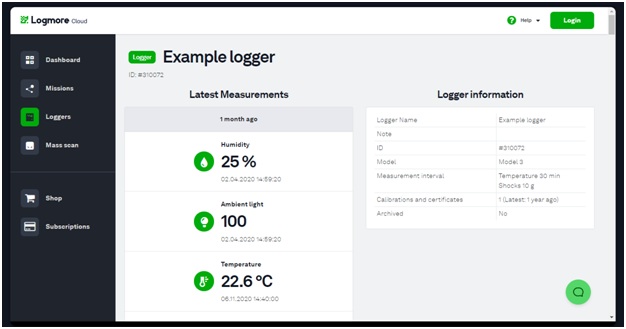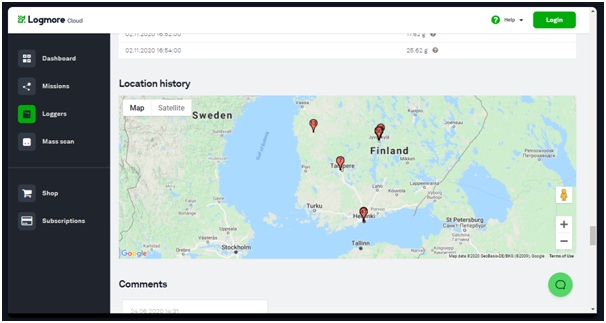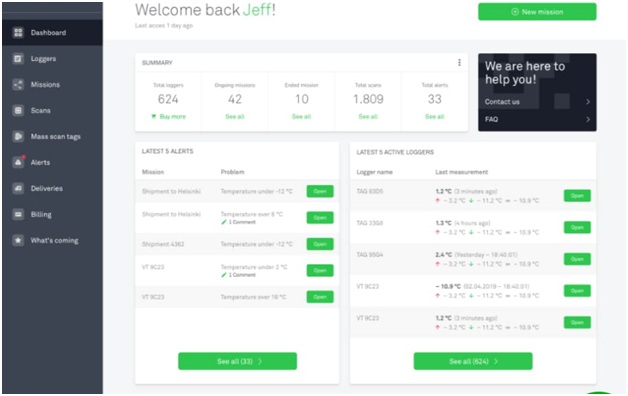Enterprises Are Using Data to Curb Waste
It’s common for enterprise companies to waste significant resources, whether it’s in the form of money, talent, product spoilage, intellectual property or even utilities and fossil fuels. Much of this waste takes place without anyone in management even being aware, simply as a result of the sheer scale of enterprise operations.
Often, organizational bloat leads to a lack of governance and transparency, which means that management overlooks smaller inefficiencies and gaps in business processes. These inefficiencies, in turn, can begin to add up, especially once waste begins to seep into the company culture, ultimately leading to all manners of lost resources during production, transport, and disposal.
One of the areas in enterprise operations where waste is particularly huge is the supply chain. Without real-time insights into the actual condition and status of inventory as it moves through the supply chain, issues such as failing to maintain the required cold storage levels for temperature-sensitive products can lead to spoilage and massive waste.
Other types of waste that enterprises need to eliminate or reduce include overpaying for utilities, using the wrong tools that hinder workflow efficiencies, not automating in areas where it makes sense, and spending time on the wrong projects. The right tools can help to surface key data metrics that help companies to lower waste in these areas. For instance, reliable time tracking software can help streamline team management, project scheduling, accounting and strategic headcount planning.
The right software can also generate reports on valuable insights to track productivity, forecast budget issues and relationships with partner organizations and vendors to help managers ensure efficiency and minimize potential losses.
Ultimately, a big factor that leads to waste in enterprises is the lack of overall visibility over operations and processes, and it’s impossible to address these issues unless you have the right data at your fingertips. From third-party “big data” troves to supply chain metrics collected via data logger devices, information helps teams and managers identify and understand leaks and bottlenecks in enterprise operations to curb waste.
This post looks into how enterprises can use data to minimize supply chain waste.
Table of Contents
Track temperature conditions information of products in-transit
Some of the biggest contributing factors to massive waste in the supply chain are product mishandling and temperatures of perishable items that are not properly maintained while in transit. Companies often only find out that the products are no longer viable when they arrive, and most of the time, there’s nothing anyone can do about it, leading to potentially huge waste and, in turn, revenue loss.
That is why monitoring data on temperature conditions and changes, with minimal latency, is crucial to help companies preserve product quality during transport. Comprehensive condition monitoring solution Logmore provides devices and systems that collect and then sync data over a secure cloud. This helps enterprises deploy shipments faster and capture data more accurately to minimize waste.
The technology’s QR code-based data logger devices use accurate built-in sensors to measure conditions including temperature, shocks, humidity, tilt, ambient light and location.

When shipments of medications, food, and other cold chain goods spoil, companies can know while the items are still in transit, allowing enterprises to cut losses.
In a nutshell, condition monitoring software tells companies whether products are okay during transport through data logging information in real-time to take appropriate actions to lessen damage and reduce waste.
Find reliable supply chain partners and providers
Providers within the supply chain, such as shipping and freight services, play a crucial role in maintaining excellent product quality and conditions. After all, long shipping delays, unmet delivery schedules, and mishandling during transport can lead to product damages and spoilage of perishable and cold chain goods.
Logmore’s IoT solution provides intelligent tracking through smart features and connectivity that automatically gather relevant data.
It helps companies assess transport service providers’ performance and monitor third-party service quality, such as route holdups or extreme temperature drops and deviations that could indicate inadequate handling and faulty shipment carrier facilities that lead to unusable and ruined products.
The solution’s data logger captures time and location history, which can show if suppliers purposely delay shipment, causing products with short shelf lives to spoil and turn to waste.

The location history panel indicates if freight services leave, arrive on time, and if they take routes that make the delivery time more efficient to maintain product conditions. With this technology, companies that work with multiple freight service providers can easily track and gain data on who ships most efficiently and stop working with those who are unreliable, too slow or don’t comply with regulations.
Additionally, Logmore’s data loggers capture data at set intervals, helping enterprises pinpoint where damages potentially occur, improving logistics quality and legal protection in disputes with third-party freight services and transport partners.
Establish detailed inventory for proper monitoring and storage
How temperature-sensitive, fragile, perishable goods are stored significantly impact each product’s quality, especially in transit. Different types of items also require specialized, often product-specific handling, storage, and distribution methods.
If the storage and monitoring of these products is inadequate, they could spoil or get damaged as they move through the supply chain, and companies could be looking at more losses than profits. While enterprises have no absolute control over how products are transported, having accurate inventory data will help ensure proper storage and monitoring.
By having a detailed inventory, companies can determine everything from the kind of vehicles or shipping containers, packaging and temperature control.
This helps maintain secure and safe transport, so products are preserved to optimum conditions by the time the end-users receive them and reduce spoilage and waste. Logmore’s integrated solutions provide an easy-to-use and centralized way to ensure that everyone within the supply chain knows how to handle the products correctly.

The solution lets you customize the Logmore Web cloud service to enhance uniformity via branded user views and interfaces.
With the solution’s data logging information stored on the cloud, people across the supply chain can access the products’ specifications, condition requirements, and actual measurements to ensure the preservation of their quality, reducing potential damages and wastes.
Wrapping up
Using data to track temperature conditions of products in-transit, establish detailed inventory for proper monitoring and storage, and find reliable supply chain partners and providers, enterprises can cut down on potential waste within the supply chain.
While the supply chain isn’t the only area where companies can find operations leaks and inefficiencies that lead to waste, eliminating the supply chain waste significantly reduces potential product, customer, and revenue loss.
With reliable and robust technology, you get more visibility and transparency over the supply chain.
You’ll also gain and access relevant data for tracking product conditions from end-to-end of the supply chain and preserve the quality of perishable, temperature-sensitive, and fragile products.
Kamran Sharief
Related posts
Sidebar
Recent Posts
An Inside Look Of Paraulogic
Introduction Welcome to the exciting world of Paraulogic! Are you ready to dive into a linguistic adventure and put your…
Empowering Artists with Cryptocurrency: A Guide to Selling Art Using NFTs
In the ever-evolving landscape of the art world, artists are constantly seeking innovative ways to showcase and monetize their creations….



